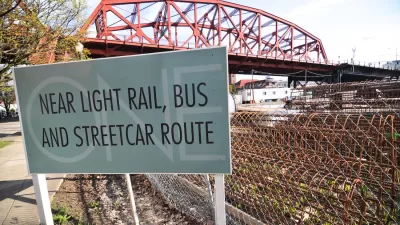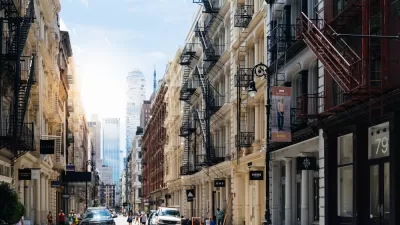A report released last week by Cushman & Wakefield has won a lot of attention from media outlets covering large-scale development market trends. Among the report's findings: growing cities need to better support transit-oriented development.

"Cushman & Wakefield has released a new report that explores the consequences of rapid population growth in 10 major North American cities," reports Rayna Katz for Globe St. The report, titled Urban Development: Faster Greener Commutes Key to Sustained City Growth, "discusses the impact of intensified gridlock and slow commutes that impact work productivity and quality of life, along with the transit-oriented real estate developments helping to relieve congestion and support growth." The report examines case studies from Atlanta, Boston, Chicago, Los Angeles, Mexico City, Miami, New York, San Francisco, Toronto, and Washington D.C.
A key finding of the report: "the majority of new commercial development, as well as residential development, in metro areas today is transit oriented."
Susan Pigg, writing for the Toronto Star, elaborates on the implications of that last point, pointing out the report's argument that "developers remain almost universally challenged by aging or insufficient infrastructure, red tape, lack of funding and NIMBYism among residents who may not want new transit lines in their backyards."
Writing for Finance-Commerce, Cali Owings points out another trend reported by Cuchman &Wakefield: " In most cities included in the report, developers report a price premium of 10-25 percent for construction of transit-oriented projects because of the location and infrastructure improvements needed. In many cities, public efforts boost TOD despite barriers."
FULL STORY: C&W: Transportation Drives CRE Development

Trump Administration Could Effectively End Housing Voucher Program
Federal officials are eyeing major cuts to the Section 8 program that helps millions of low-income households pay rent.

Planetizen Federal Action Tracker
A weekly monitor of how Trump’s orders and actions are impacting planners and planning in America.

Ken Jennings Launches Transit Web Series
The Jeopardy champ wants you to ride public transit.

California Invests Additional $5M in Electric School Buses
The state wants to electrify all of its school bus fleets by 2035.

Austin Launches $2M Homelessness Prevention Fund
A new grant program from the city’s Homeless Strategy Office will fund rental assistance and supportive services.

Alabama School Forestry Initiative Brings Trees to Schoolyards
Trees can improve physical and mental health for students and commnity members.
Urban Design for Planners 1: Software Tools
This six-course series explores essential urban design concepts using open source software and equips planners with the tools they need to participate fully in the urban design process.
Planning for Universal Design
Learn the tools for implementing Universal Design in planning regulations.
Ada County Highway District
Clanton & Associates, Inc.
Jessamine County Fiscal Court
Institute for Housing and Urban Development Studies (IHS)
City of Grandview
Harvard GSD Executive Education
Toledo-Lucas County Plan Commissions
Salt Lake City
NYU Wagner Graduate School of Public Service



























